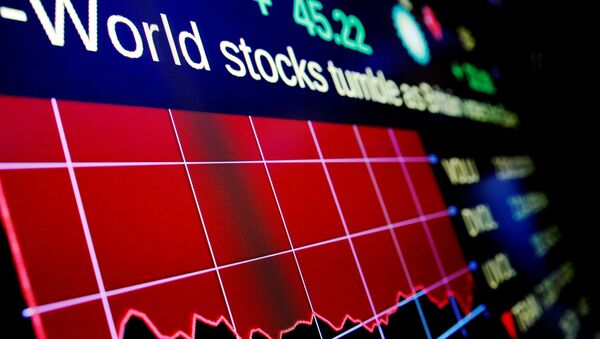The US economy plunged by an annual rate of 32.2% in the second quarter of 2020, the fastest pace in American history, due to lockdown measures caused by the COVID-19 health crisis, according to the Commerce Department.
"Real gross domestic product (GDP) decreased at an annual rate of 32.9 percent in the second quarter of 2020, according to the 'advance' estimate released by the Bureau of Economic Analysis", the department's news release reads.
According to first estimates, the fall in GDP during the second quarter, from April to June, was mostly explained by a drop in consumer spending, which was down by 34.6% on an annualised basis.
The decline is believed to be the most dramatic one recorded since the US government began documenting these figures in 1947. The previous sharpest drop of 10% occurred in the second quarter of 1958. The figure is still more optimistic than was initially expected by economists, who predicted a 34.7% decline, according to surveys conducted by Dow Jones.
In the first quarter of 2020, US GDP fell at an annual rate of 4.8%, according to the Bureau of Economic Analysis, already a significant drop from the 2.1% increase seen in Q4 2019.

US Economic Activity Revitalises to Then Slow Down Again
The drop in GDP figures came as a combination of sharp declines in personal consumption, spending and investments, with the personal consumption expenditures price index dropping to 1.9% in Q2. Personal income figures still remain high though, possibly due to large cash infusions initiated by the Trump administration to help American businesses and consumers stay afloat during the pandemic. As such, personal disposable income rose by 42.1% to $1.53 trillion in total during this period.
April is believed to have been the most disastrous month in terms of falling economic activity, with most factories, businesses, restaurants and non-essential shops being shut down across the country. Economic vitality is said to have been revived in May, but with a renewed rise in the number of coronavirus cases throughout the country, especially in the Southern states, the economic resurgence has been halted, as acknowledged by Federal Reserve Chair Jerome Powell this week.
New Stimulus and Soaring Unemployment
It is still not yet clear whether the US economy will manage to bounce back in the next two quarters.
The US Congress is currently debating a new stimulus package in addition to the $2.2 trillion CARES Act singed by Donald Trump in March to help stimulate the American economy during the health crisis. Trump's money giveaway is said to have significantly boosted the national economy and prevented it from falling even further, with multi-billion dollar aid for large corporations, forgivable loans to small business and one-time cash transfers to individuals. A new aid package has already been approved by the Democrat-dominated House of Representatives but is yet to be debated by the Senate, and is set to provide Americans with a $3 trillion-worth stimulus.
However, according to some economists, including ex-IMF deputy managing director Zhu Min, this measure, when accompanied by an aggressive monetary policy of quantitative easing pursued by the US Federal Reserve and a mounting national debt, create a massive risk for the stability of the dollar as a global currency.
In addition to damning GDP estimates, the government is expected to soon issue its latest overview of the state of the American jobs market, as unemployment fears remain. According to reports, over one million Americans applied for unemployment benefits in the course of the last four to five months, with an 11.1% unemployment rate recorded in June.



